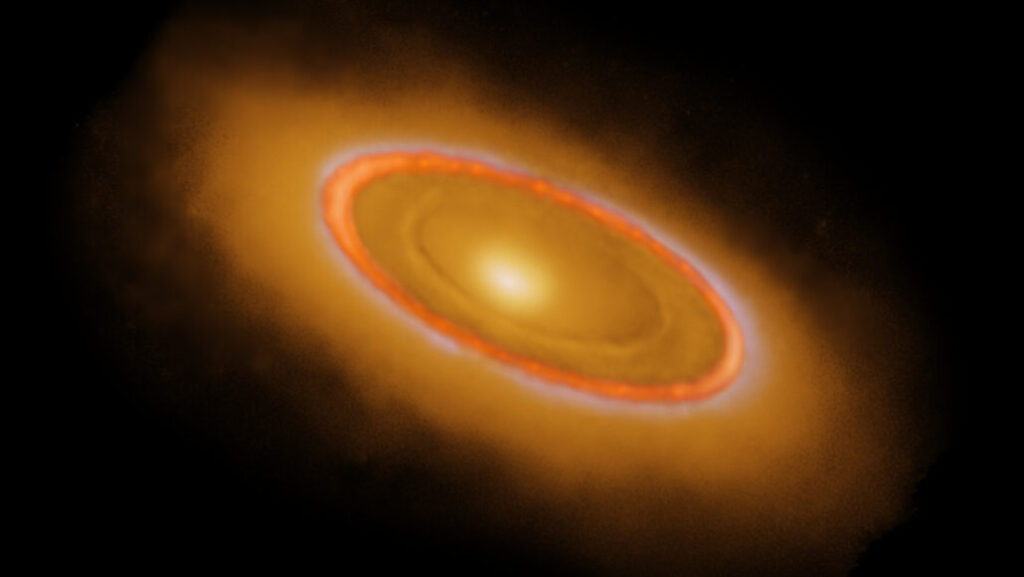Scientists on Monday unveiled observations by the James Webb Space Telescope showing new details about such features around a luminous star called Fomalhaut in our own neighborhood of the Milky Way galaxy. These observations of three concentric dusty rings of debris orbiting Fomalhaut provide the fullest view to date of such structures outside our solar system.
The James Webb Space Telescope (JWST) has revealed the first asteroid belts found outside of our solar system. The belts are located around the young star Fomalhaut, which is about 25 light-years from Earth.
Fomalhaut is a very young star, only about 400 million years old. It is surrounded by a large disk of dust and gas, which is thought to be the remnants of a protoplanetary disk. The disk is very dynamic, with many small objects colliding and forming new objects. This process is thought to be responsible for the formation of planets in the Fomalhaut system.
Fomalhaut, one of the brightest stars in our night sky and the brightest in the southern constellation Piscis Austrinus, is located 25 light years from Earth. A light year is the distance light travels in a year, 5.9 trillion miles (9.5 trillion km).
The inner disk of Fomalhaut is particularly interesting. It is much brighter than the outer disk, and it contains a large amount of dust. This dust is thought to be heated by the star, and it may be responsible for the formation of planets in the inner region of the system.
The JWST was able to see the asteroid belts because it is equipped with infrared cameras that can see through dust and gas. The belts are located in the outer regions of the Fomalhaut system, and they are thought to be made up of leftover debris from the formation of the star and its planets.The discovery of the asteroid belts is a major breakthrough for astronomers, as it provides new insights into the formation of planetary systems. It also suggests that there may be more asteroid belts out there waiting to be discovered.The JWST is still in its early stages of operation, but it has already made a number of significant discoveries. The asteroid belts around Fomalhaut are just one example of the many exciting things that the telescope is capable of.The asteroid belts around Fomalhaut are three distinct rings of debris that orbit the star. The outer ring is about 14 billion miles (23 billion kilometers) from the star, the middle ring is about 10 billion miles (16 billion kilometers) from the star, and the inner ring is about 6 billion miles (9 billion kilometers) from the star.The rings are made up of small objects, such as asteroids and comets. The objects in the rings are thought to be the remnants of a protoplanetary disk, which is a disk of gas and dust that surrounds a young star. As the star and its planets formed, the protoplanetary disk was gradually depleted, leaving behind the asteroid belts.The discovery of the asteroid belts around Fomalhaut is significant because it provides new insights into the formation of planetary systems. It suggests that asteroid belts are a common feature of planetary systems, and that they can form in a variety of different ways.The discovery of the asteroid belts also raises the possibility that there may be planets in the Fomalhaut system that have not yet been discovered. The gaps in the rings could be caused by the gravitational pull of planets that are orbiting the star.The James Webb Space Telescope is still in its early stages of operation, but it has already made a number of significant discoveries. The asteroid belts around Fomalhaut are just one example of the many exciting things that the telescope is capable of.

